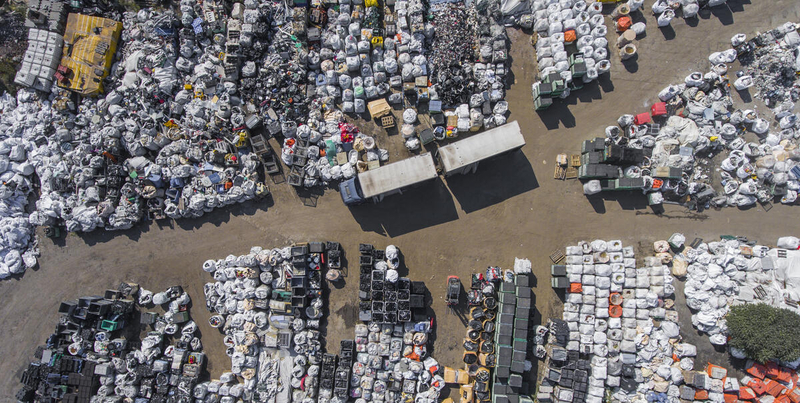Develop Circular Solutions
Environmental Defense Fund
Circularity is an approach to sustainability that aims to reuse, repair, and recycle products to reduce their environmental impact. By designing products and processes that reduce waste, extend product life, and maximize the use of resources, you can create a more sustainable business model.

Circularity is gaining traction as a popular approach to sustainability for businesses. This approach aims to reduce waste by keeping products and materials in use for as long as possible and by designing for a product’s end of life. By adopting circular solutions, your company can reduce its environmental impact, save costs, and create new business opportunities.
Circular solutions can also help companies differentiate themselves from competitors, reduce the need for new materials, reduce the cost of repairs, and open new revenue streams. With increasing consumer interest in sustainable products, circular solutions can help your company to appeal to environmentally conscious customers and position itself for success in a rapidly changing business environment.
To develop circular solutions, you need to understand your current product lifecycle. This involves examining your production process, from the extraction of raw materials to the disposal of waste. One way to assess your product lifecycle is to conduct a Life Cycle Assessment (LCA). An LCA is a comprehensive analysis of the environmental impacts of a product throughout its entire life. An LCA can help you identify the stages of your production process that generate the most carbon emissions and other environmental impacts.
Circular Design
One way to design for circularity is to use sustainable design principles. Sustainable design can help you create products that are more durable, easier to repair, and that are made with more environmentally friendly materials. Another approach to designing for circularity is to use biomimicry, which takes inspiration from nature to create more sustainable products.
Case Study
Patagonia
Patagonia is a clothing company that designs its products with sustainability in mind. Patagonia uses recycled materials in many of its products, and it also offers a repair service for its clothing, encouraging customers to keep their clothing in use for as long as possible.1
Closed Loop Supply Chains
A closed-loop supply chain reuses and recycles materials. One way to implement a closed-loop supply chain is to use circular procurement. Circular procurement involves sourcing materials and products that can be reused, repaired, or recycled. By sourcing materials and products that are part of a closed-loop system, you can reduce waste and emissions throughout your supply chain.
You can also seek out circular procurement solutions for heavy and rare metals used in technology and industrial facilities. Due to their scarcity and high demand, these metals are valuable resources that should be conserved and reused as much as possible. Recycling these metals not only reduces the need for new mining and extraction but also helps prevent environmental pollution in local communities.
You should also be prepared for the end of a product’s life. By implementing a system for reverse logistics, you can ensure that used products and materials are properly collected and recycled, reducing waste and emissions.
Case Study
Dell
Dell sources materials and products that are designed for reuse, repair, or recycling, and it has implemented a closed-loop system for its computer products. Dell collects used computers and processes them into new products, reducing waste and emissions.2
Collaborating with suppliers and customers plays an essential role in building an effective closed-loop supply chain. You can work with suppliers to source materials that are more durable and environmentally friendly, enabling your circular supply chain. You also need to communicate with your customers so that they understand that your product is part of a closed-loop system. They need to know how to return or recycle your product when it reaches end-of-life.
Case Study
IKEA
IKEA has successfully collaborated with its suppliers and customers to implement circular solutions. IKEA has created a closed-loop system for its products, where used furniture is collected, repaired, and resold. IKEA also works with its suppliers to source environmentally friendly materials and reduce waste.3
Environmental Justice Considerations
Circular solutions, when well implemented, can also support your environmental justice goals. Consider downstream waste from your product’s use. This waste can have significant impacts on the marginalized communities where it ends up and on surrounding ecosystems. If you instead had a take-back program and recycled most of the materials into new products, you could significantly reduce your social and environmental impact. By re-using inputs, you would also reduce the need for virgin materials, which could decouple your supply chain from geographies with abusive labor practices.
It is important to acknowledge that circular solutions are no panacea when it comes to environmental justice. For example, if you implement a closed-loop supply chain with toxic elements, you will need to address the impact of these chemicals on your employees and the local community. Another possible challenge could be the increased product costs associated with developing a new, circular supply chain. While you may attract new customers, you could also price some consumers out of the market for your goods. When developing circular solutions, the key is to think critically about the positive and negative environmental justice implications of your work and focus on solutions where you will have the greatest positive impact.